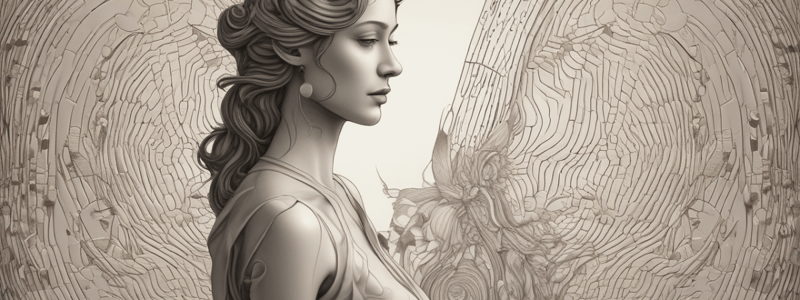Podcast
Questions and Answers
What do sensory preconditioning experiments, such as Rizley & Rescorla (1972), challenge?
What do sensory preconditioning experiments, such as Rizley & Rescorla (1972), challenge?
- The role of operant conditioning in learning
- The idea that learning can only occur in the form of S-R associations (correct)
- The concept of outcome-response associations
- The significance of behavioral observations
What is the primary focus of the Outcome-Response or Goal-Directed theory?
What is the primary focus of the Outcome-Response or Goal-Directed theory?
- The distinction between S-R and O-R associative structures
- The role of reinforcement in shaping behavior
- The relation between outcomes and responses (correct)
- The establishment of associations between stimuli
What is the result of extensive training or specific reinforcement protocols, according to the text?
What is the result of extensive training or specific reinforcement protocols, according to the text?
- A decrease in the role of reinforcement
- A bias towards S-O-R representations
- A bias towards S-R (habitual) representations (correct)
- A shift from S-R to O-R associative structures
What is demonstrated using Pavlovian instrumental transfer (PIT), according to the text?
What is demonstrated using Pavlovian instrumental transfer (PIT), according to the text?
What cannot account for Pavlovian instrumental transfer (PIT), according to the text?
What cannot account for Pavlovian instrumental transfer (PIT), according to the text?
What is the proposal of the S-O-R account, according to the text?
What is the proposal of the S-O-R account, according to the text?
What is the primary outcome of a negative CS-US relationship in associative learning?
What is the primary outcome of a negative CS-US relationship in associative learning?
According to the Rescorla-Wagner Model, what is the underlying mechanism driving conditioned responses?
According to the Rescorla-Wagner Model, what is the underlying mechanism driving conditioned responses?
In the context of Pavlovian phenomena, what is the primary function of the conditioned stimulus (CS)?
In the context of Pavlovian phenomena, what is the primary function of the conditioned stimulus (CS)?
What phenomenon is observed when an organism learns to respond to a stimulus as if it were a substitute for the unconditioned stimulus (US)?
What phenomenon is observed when an organism learns to respond to a stimulus as if it were a substitute for the unconditioned stimulus (US)?
What is an example of a conditioned response (CR) that is influenced by the nature of the reinforcer, as demonstrated in the experiment by Moore (1969)?
What is an example of a conditioned response (CR) that is influenced by the nature of the reinforcer, as demonstrated in the experiment by Moore (1969)?
What is the outcome of using a second rat as a conditioned stimulus (CS) in the experiment by Timberlake and Grant (1975)?
What is the outcome of using a second rat as a conditioned stimulus (CS) in the experiment by Timberlake and Grant (1975)?
What is the primary factor that determines which stimulus will overshadow the other in Pavlovian conditioning?
What is the primary factor that determines which stimulus will overshadow the other in Pavlovian conditioning?
According to the Rescorla-Wagner model, what is the value range of the association strength between the conditioned stimulus and the unconditioned stimulus?
According to the Rescorla-Wagner model, what is the value range of the association strength between the conditioned stimulus and the unconditioned stimulus?
What is the name of the phenomenon where a conditioned stimulus that is already associated with an unconditioned stimulus interferes with the learning of a new conditioned stimulus?
What is the name of the phenomenon where a conditioned stimulus that is already associated with an unconditioned stimulus interferes with the learning of a new conditioned stimulus?
What is the shape of the learning curve in associative learning, according to the Rescorla-Wagner model?
What is the shape of the learning curve in associative learning, according to the Rescorla-Wagner model?
What is the underlying mechanism of the Rescorla-Wagner model, where the association between the conditioned stimulus and the unconditioned stimulus is encoded in memory?
What is the underlying mechanism of the Rescorla-Wagner model, where the association between the conditioned stimulus and the unconditioned stimulus is encoded in memory?
What is the primary factor that determines the change in associative strength (∆V) in the Rescorla-Wagner model?
What is the primary factor that determines the change in associative strength (∆V) in the Rescorla-Wagner model?


